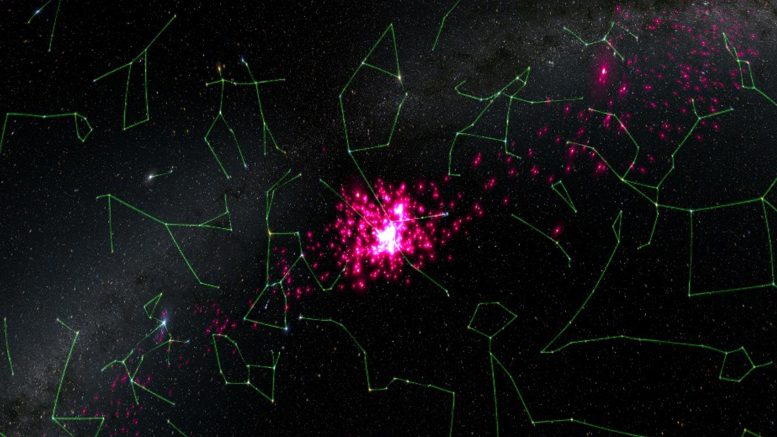
The Hyades star cluster is gradually merging with the background of stars in the Milky Way. The cluster is located 153 light years away and is visible to the unaided eye because the brightest members form a ‘V’-shape of stars in the constellation of Taurus, the Bull. This image shows members of the Hyades as identified in the Gaia data. Those stars are marked in pink, and the shapes of the various constellations are traced in green. Stars from the Hyades can be seen stretching out from the central cluster to form two ‘tails’. These tails are known as tidal tails and it is through these that stars leave the cluster. The image was created using Gaia Sky. Credit: ESA/Gaia/DPAC, CC BY-SA 3.0 IGO; acknowledgment: S. Jordan/T. Sagrista.
Data from ESA’s Gaia star mapping satellite have revealed tantalizing evidence that the nearest star cluster to the Sun is being disrupted by the gravitational influence of a massive but unseen structure in our galaxy.
If true, this might provide evidence for a suspected population of ‘dark matter sub-halos’. These invisible clouds of particles are thought to be relics from the formation of the Milky Way, and are now spread across the galaxy, making up an invisible substructure that exerts a noticeable gravitational influence on anything that drifts too close.
ESA Research Fellow Tereza Jerabkova and colleagues from ESA and the European Southern Observatory made the discovery while studying the way a nearby star cluster is merging into the general background of stars in our galaxy. This discovery was based on Gaia’s Early third Data Release (EDR3) and data from the second release.
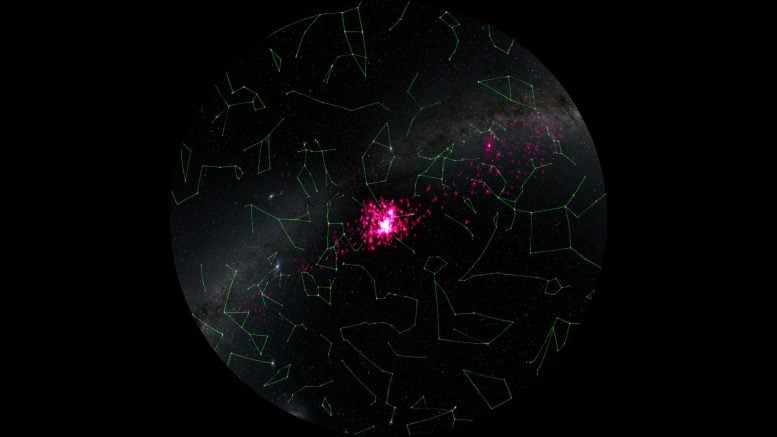
The true extent of the Hyades tidal tails has been revealed for the first time by data from the ESA’s Gaia mission. The Gaia data has allowed the former members of the star cluster (shown in pink) to be traced across the whole sky. Those stars are marked in pink, and the shapes of the various constellations are traced in green. The image was created using Gaia Sky. Credit: ESA/Gaia/DPAC, CC BY-SA 3.0 IGO; acknowledgment: S. Jordan/T. Sagrista
The team chose the Hyades as their target because it is the nearest star cluster to the Sun. It is located just over 153 light-years away, and is easily visible to skywatchers in both northern and southern hemispheres as a conspicuous ‘V’ shape of bright stars that marks the head of the bull in the constellation of Taurus. Beyond the easily visible bright stars, telescopes reveal a hundred or so fainter ones contained in a spherical region of space, roughly 60 light-years across.
A star cluster will naturally lose stars because as those stars move within the cluster they tug at each other gravitationally. This constant tugging slightly changes the stars’ velocities, moving some to the edges of the cluster. From there, the stars can be swept out by the gravitational pull of the galaxy, forming two long tails.
One tail trails the star cluster, the other pulls out ahead of it. They are known as tidal tails, and have been widely studied in colliding galaxies but no one had ever seen them from a nearby open star cluster, until very recently.
The key to detecting tidal tails is spotting which stars in the sky are moving in a similar way to the star cluster. Gaia makes this easy because it is precisely measuring the distance and movement of more than a billion stars in our galaxy. “These are the two most important quantities that we need to search for tidal tails from star clusters in the Milky Way,” says Tereza.
Previous attempts by other teams had met with only limited success because the researchers had only looked for stars that closely matched the movement of the star cluster. This excluded members that left earlier in its 600–700 million-year history and so are now traveling on different orbits.
To understand the range of orbits to look for, Tereza constructed a computer model that would simulate the various perturbations that escaping stars in the cluster might feel during their hundreds of millions of years in space. It was after running this code, and then comparing the simulations to the real data that the true extent of the Hyades tidal tails were revealed. Tereza and colleagues found thousands of former members in the Gaia data. These stars now stretch for thousands of light-years across the galaxy in two enormous tidal tails.
But the real surprise was that the trailing tidal tail seemed to be missing stars. This indicates that something much more brutal is taking place than the star cluster gently ‘dissolving’.
Running the simulations again, Tereza showed that the data could be reproduced if that tail had collided with a cloud of matter containing about 10 million solar masses. “There must have been a close interaction with this really massive clump, and the Hyades just got smashed,” she says.
But what could that clump be? There are no observations of a gas cloud or star cluster that massive nearby. If no visible structure is detected even in future targeted searches, Tereza suggests that object could be a dark matter sub-halo. These are naturally occurring clumps of dark matter that are thought to help shape the galaxy during its formation. This new work shows how Gaia is helping astronomers map out this invisible dark matter framework of the galaxy.
“With Gaia, the way we see the Milky Way has completely changed. And with these discoveries, we will be able to map the Milky Way’s sub-structures much better than ever before,” says Tereza. And having proved the technique with the Hyades, Tereza and colleagues are now extending the work by looking for tidal tails from other, more distant star clusters.
Reference: “The 800 pc long tidal tails of the Hyades star cluster: Possible discovery of candidate epicyclic overdensities from an open star cluster” by Tereza Jerabkova, Henri M. J. Boffin, Giacomo Beccari, Guido de Marchi, Jos H. J. de Bruijne and Timo Prusti, 24 March 2021, Astronomy and Astrophysics.
DOI: 10.1051/0004-6361/202039949

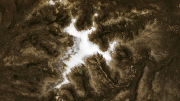

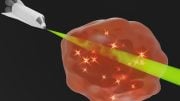


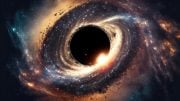


Gaia is living up to its promises!
So this is presumably a relative young open cluster – “an open star cluster” as in the paper subtitle – which is too small to keep together, as opposed to an old massive globular cluster.
“For the first time, we explore the effect of the initial cluster rotation and the presence of lumps in the Galactic potential on the formation and evolution of tidal tails.”
“In the eDR3 data we recovered spatial overdensities in the leading and trailing tails that are kinematically consistent with being epicyclic overdensities and thus would present candidates for the first such detection in an open star cluster. We show that the epicyclic overdensities are able to provide constraints not only on the cluster properties, but also on the Galactic potential. Finally, based on N-body simulations, a close encounter with a massive Galactic lump can explain the observed asymmetry in the tidal tails of the Hyades.”
That is interesting, it would mean dark matter lumps would also be tidally stretched and tend to rotate with the normal matter disk. I.e. (tidal) gravitational interaction would tend to synchronize the lumps that rotate in the disk plane and if they are massive they would like globular clusters not stretch much tidally. E.g. the Hyades open cluster is ~ 800 stars in the paper, while dark matter lumps can be the mass equivalent of 10 million stars. Globular clusters can mass up to that much, though in general they are about as massive as small dwarf galaxies [“Globular cluster”, Wikipedia]
The cluster age estimate is “≈600–700 Myr”. The disk orbit passages would be 3-4 at ~200 Myrs at Sun radius from the Milky Way center, and they show up nicely as wiggles both in their simulations of the cluster tails as well as in the observed data.
The last part of a 10 million solar mass dark matter collision with a star stream is familiar though. In this case it would explain the asymmetry of the tails. In other streams they create holes [“Streams of stars reveal the galaxy’s violent history—and perhaps its unseen dark matter”, Science].
“Discovered in 2006, GD1 is the longest known thin stream, stretching across more than half the northern sky. It contains a gap that could be the scar of a dark matter collision 500 million years ago.”
On the GD1 hole punch mass:
“A wrecking ball of dark matter 5 million times the mass of the Sun may be the best explanation for a disrupted stream of stars.”
[“Dark matter may have punched a hole in the Milky Way”. Astronomy]
On the general mass of such lumps:
“Dark matter itself consists of slow-moving, or “cold,” particles that come together to form structures ranging from hundreds of thousands of times the mass of the Milky Way galaxy to clumps no more massive than the heft of a commercial airplane. (In this context, “cold” refers to the particles’ speed.)”
[“Hubble Detects Smallest Known Dark Matter Clumps”, NASA]
From that article the easily seen lumps mass 100 – 1,000 million star masses, so these local observations of 10-100 times less massive lumps push that further down in mass.
More here: “Something Invisible Is Tearing Apart The Nearest Star Cluster to Earth”, Science Alert.
It links to a 2008 simulation, that gave an interesting result:
“nearly 600 halos with masses greater than 10^7M☉ are found today in the “field” between r_200 and 1.5r_200, i.e. small dark matter clumps appear to be relatively inefficient at forming stars even well beyond the virial radius;”.
[“Dark Matter Subhalos and the Dwarf Satellites of the Milky Way”, The Astrophysical Journal]
Seems to me they are saying that these 10 million star mass dark matter clumps are common in the halo field but we see no stars associated with them at far distances. (The r_200 radius is a practical halo edge definition from gas density, IIRC.)
Which would explain why this tail punch, and the GD1 hole punch, go completely “dark”.
…”massive but unseen structure in our galaxy”
or…